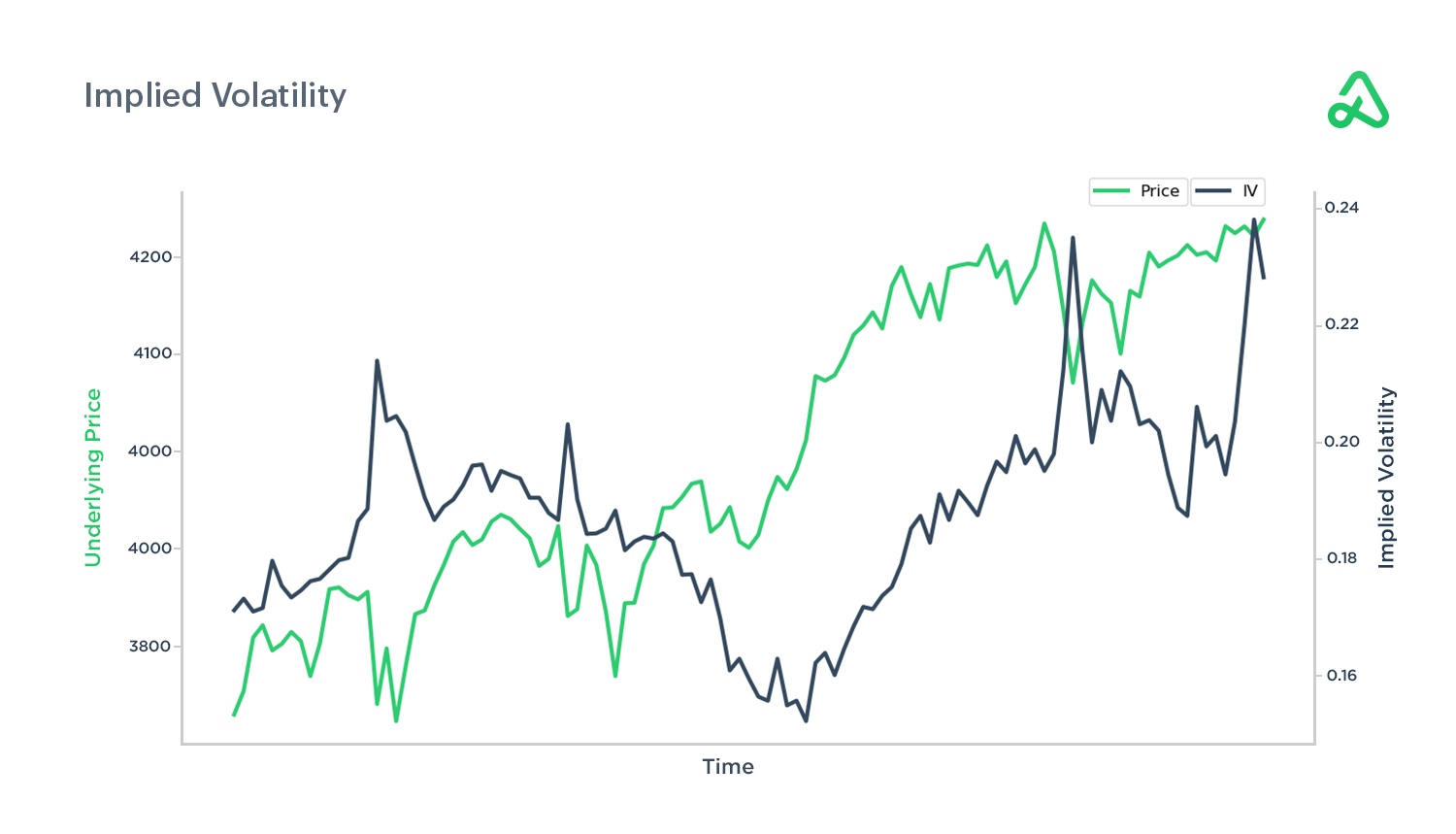Vega measures the rate of change in an option’s price for a one-percent change in implied volatility. Vega is always expressed as a positive number because increasing implied volatility typically increases an option's value. Therefore, the higher an option’s vega, the more sensitive it will be to changes in the underlying symbol’s implied volatility.
Vega is the amount option prices change for every 1% change in implied volatility in the underlying security.
Unlike other components of the Black-Scholes model, Vega is an unknown variable because it is based on future implied volatility. The strike price, underlying price, and time until expiration are all known when looking at an option.

Vega basics
The key factors impacting Vega are the option’s moneyness and time until expiration. Vega is higher for at-of-the-money options and decreases as the option moves in-the-money or out-of-the-money.
Longer-dated expirations have higher vega because more time value, or theta, means there is a greater likelihood that an event could result in higher implied volatility. Vega decreases as it approaches expiration because there is less time for volatility to impact the option's value.
How to use Vega options
Investors can use Vega options as a speculative tool. For example, traders expecting a large move in an underlying asset could buy options to try and capitalize on rising volatility. During high volatility, options traders could open short strategies, which benefit from decreasing volatility.
Option sellers can also buy (go long) volatility, or Vega, to hedge against large movements in the implied volatility of an underlying asset. Rising volatility negatively impacts short option positions. Buying options provides long exposure to Vega and can protect against increased implied volatility. Conversely, if a trader believes that the implied volatility of an option is too high, they may sell options to take advantage of a decrease in the implied volatility.
It’s important to note that low volatility does not guarantee higher volatility, especially in a short time frame. Likewise, increased volatility does not lead to an immediate decline. Volatility clusters and increased volatility can often lead to more volatility. Similarly, low volatility market environments can persist for extended periods.
Vega and implied volatility
Vega measures the sensitivity of an option’s price when implied volatility changes. Vega gives you an idea of how much an option will gain or lose as implied volatility changes. Along with time value, implied volatility determines an option’s extrinsic value.

For example, if you buy an option and implied volatility increases, the option’s Vega will also increase, and the option could be worth more, all other factors held equal. On the other hand, if you sell an option and volatility decreases, the option will be worth less than before, which is good when short an options contract.
Vega example
Assume you own a call option with an implied volatility of 20%. The current market value for the call is $5.00. If implied volatility increases to 21%, the option’s value may increase by approximately $0.20 (or 4%). This increase is due to vega.
On the other hand, if implied volatility decreases to 19%, the call might decrease by approximately 0.20 (or 4%). As you can see, vega measures how much an option's price changes when there is a 1% move in implied volatility.







